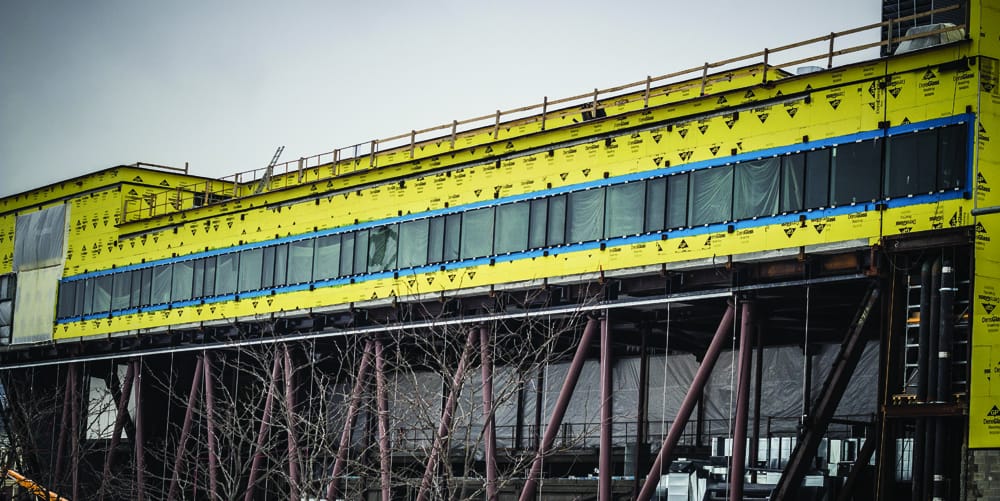U of T’s St. George campus is currently undergoing major architectural changes, and people are noticing. As money flows into the university through the Boundless Campaign, many of the buildings on the downtown St. George campus are being renovated, and new construction projects seem to be popping up daily, particularly the renovation of 1 Spadina, the Goldring Centre, the new Rotman building, and the University College back campus. As a result, concerns from students and faculty have come to light regarding the efficacy and productivity of the university’s new projects.
The field behind University College is being covered in AstroTurf to facilitate the upcoming Pan Am Games. The university argues that this will provide greater access for the students on campus who engage in field sports, as well as provide a safer facility to do so. Yet, the university administration seems unphased by the loss of one of the few green spaces left not only on the downtown campus, but in downtown Toronto in general. The price tag on this project alone tops out at $9.5 million, of which the university is providing 44 per cent with the remainder funded by the Games.
In return, Pan Am will receive exclusive use of the space for the summer of 2015. Removing one of the few natural green spaces on campus to facilitate the Games seems to favour the interests of the university’s accountants more than the interests of the students who have been without usable space for a year. It is a very bold claim to assume that only those students who choose to engage in field sports use this space. The location of the field is in the center of campus, and provides an open space for rest, relaxation, and general outdoor enjoyment in a non-athletic way. This project re-contextualizes what was once an open and free space into a closed community saved solely for the athletically inclined, which quite frankly, is not the majority of this campus; the project will really only benefit the 3,000 students who engage in field sports.
Secondly, the construction of the new Goldring Centre also seems to harbour external motivations that do not concern the experience of most students. Described by Dean Ira Jacobs as a “new paradigm for Toronto and Ontario,” it seems the administration failed to consider the university as a campus unto itself. This project is funded largely by the Goldring family, hence the namesake, the Goldring Institute for High Performance Sport. This new monstrous building eclipses half of Woodsworth Residence, dramatically affecting the visual airspace that unique residence once possessed.
This project is also concerning as it prioritizes the national perception of the university as a sports institute as opposed to considering the campus as a whole experience. This is not to suggest that the university ought not to utilize such generous resources, nor should they forgo private donations. Rather, I am suggesting that these two large constructions on campus, which are causing massive shifts in the flow of the campus as a whole, ought to be considered critically as it pertains to the function they serve for the greater student body. To place such a priority on our position as a sports-loving institution, without considering the more pressing needs of the university, seems unjust to the growth of the campus as a whole. U of T is only ever as good as the experience it offers students, and given the priority of massive campus-wide construction and renovation, the student body is left to fend off closures while the sounds of construction rattle their heads.
Olivia Forsyth-Sells is studying English and philosophy.


